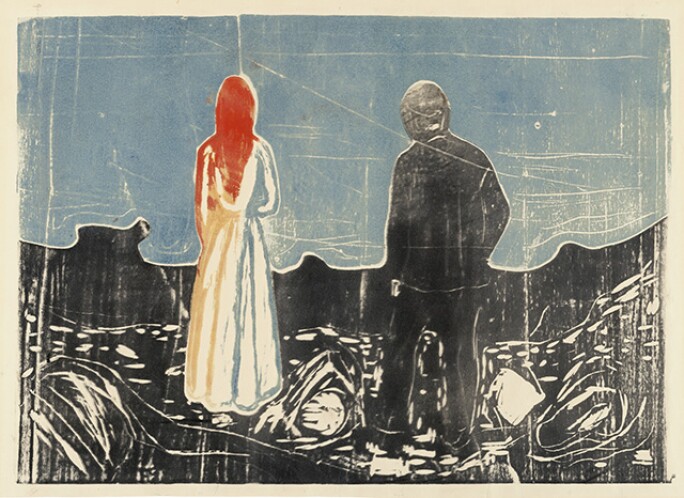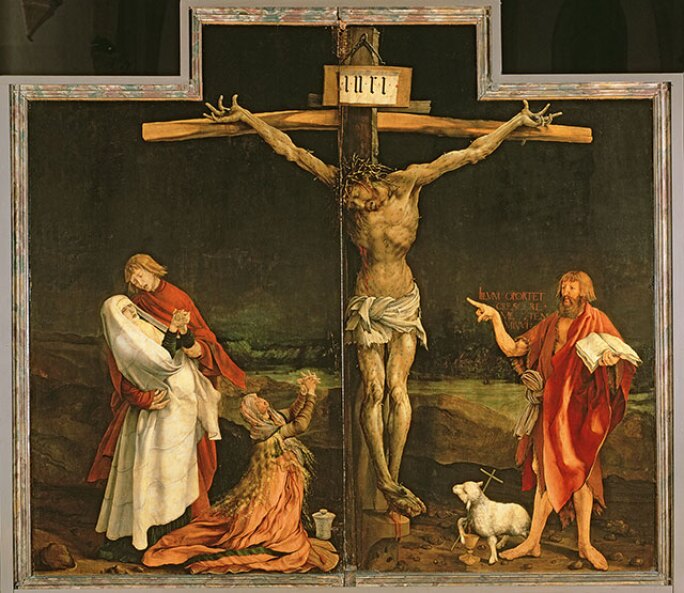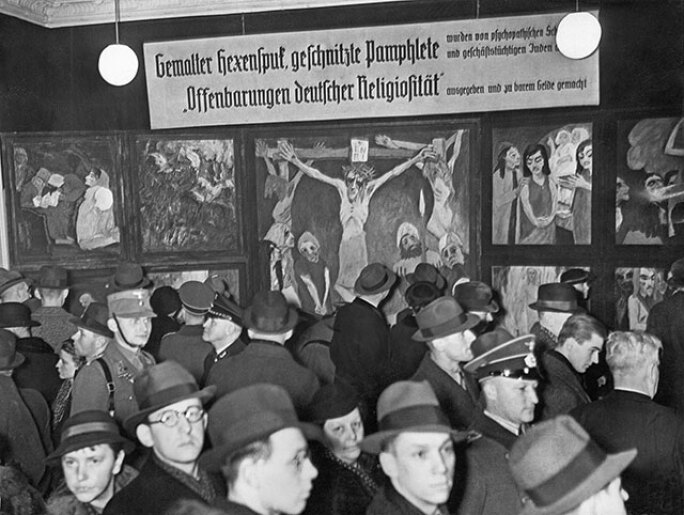7 Things You Need to Know: Expressionism
sothebys_ Expressionism emerged at the dawn of the 20th century in Europe as vanguard artists attempted to convey the isolation and anxiety of modern existence through bold colors and tense, powerful lines. Privileging emotional experience over all else, the style found its roots in the work of Egon Schiele, Edvard Munch and Vincent van Gogh, and presented a radically altered and subversive view of the world that artists are still grappling with today. Below are some facts about the movement, along with a few upcoming lots by Munch, Emil Nolde and others associated with the movement.

1. What’s in a name? The term “expressionism” was coined in 1910 when a Czech art historian used the phrase to describe a group of artists as a contrast to the Impressionists. While the Impressionists interpreted nature, this burgeoning group of Expressionists explored the psyche. Though described as Expressionists the leading artists of the movement including Ernst Ludwig Kirchner, Franz Marc, Alexej von Jawlensky and Wassily Kandinsky never defined themselves as such.

2. The Bridge and the Blue Rider:In the years leading up to World War I, the Expressionists reacted against the increasingly industrialized and isolating modern condition through artworks that conveyed innermost human emotions. Two major art movements defined the style. First was the Dresden-based Die Brücke, or “The Bridge.” Formed in 1905 with Erich Heckel, Ernst Ludwig Kirchner and Emil Nolde, the group sought to link art to ideas of the future. The second group, led by Kandinsky, was the more loosely defined Der Blaue Reiter, formed in 1911 with the aim of cultivating the spiritual within art.

ERNST LUDWIG KIRCHNER, SELF PORTRAIT OF A SOLDIER, 1915.
COLLECTION OF ALLEN MEMORIAL ART MUSEUM, OBERLIN COLLEGE, OHIO. PHOTOGRAPH COURTESY OF BRIDGEMAN IMAGES.
3. Fraught art, fraught lives:The birth of psychoanalysis in Vienna during late 1800s had implications far beyond the medical community. The unconscious mind, the meaning of dreams and internal struggles of repression and anxiety as explored by Sigmund Freud were the subject of much Expressionist art. The harrowing landscape of the mind was far beyond theoretical as World War I brought many of these artists to the trenches. Kirchner was discharged from the military after he suffered a nervous breakdown while Max Beckmann referred to the war as a “great injury to my soul.”

MATTHIAS GRÜNEWALD, THE CRUCIFIXION, FROM THE ISENHEIM ALTARPIECE, CIRCA 1512–15. COLLECTION OF MUSEE D'UNTERLINDEN, COLMAR, FRANCE. PHOTOGRAPH COURTESY OF BRIDGEMAN IMAGES.
4. Sacred: In its depiction of both psychic suffering and physical torment, the religious imagery of the Northern Renaissance provided an important model for the Expressionists. The crucifixion scenes of 15th-century painter Matthias Grünewald (above) were particularly influential for their use of color and dramatic rendering of the human body in anguish. Distorted and often emaciated renderings of the body by Schiele and Munch harken to Grünewaldian depictions of the suffering Christ and the ascetic saints.

5. Profane: Spiritual, yes, but the preferred subject matter of the Expressionists was far from puritanical. The works flirted with blasphemy, as in Schiele’s depiction of a cardinal and nun locked in an embrace (above), and some was considered outright criminal. Among the Expressionists, Austrian artists Schiele and Oskar Kokoschka both attracted particularly heated criticism for their erotic, unidealized nudes that frankly depicted such taboo themes as homosexuality and masturbation. In 1911 Schiele, who was known for his predilection for very young models, was briefly arrested after police confiscated hundreds of his “pornographic” drawings.

THE OPENING OF THE 'DEGENERATE ART' EXHIBITION IN BERLIN, 1938. EMIL NOLDE’S CRUCIFIXION (1912) INSPIRED BY MATTHIA GRÜNEWALD IS VISIBLE AT CENTER. PHOTOGRAPH COURTESY OF SZ PHOTO / SCHERL / BRIDGEMAN IMAGES.
6. Degenerate Art: With rise of the Nazism in Germany came the end of Expressionism. Classified as Degenerate, a catchall term for art considered morally suspect, Jewish or Communist, Expressionism was removed from museums and confiscated from private collections. In 1937, hundreds of works by Nolde, Heckel, Kirchner and Beckmann were seized. Many were subsequently included the Degenerate Art exhibition (above), which travelled throughout Germany and Austria. The following year, having been banned from art-making a distraught Kirchner committed suicide.

ARTIST JULIAN SCHNABEL, NEW YORK, MAY 1986. PHOTOGRAPH COURTESY OF THE ESTATE OF EVELYN HOFER / CONTRIBUTOR, GETTY IMAGES.
7. Neo Expressionism:A half a century later, in the late 1970s and early 1980s, a group of artists including Jean-Michel Basquiat, Francesco Clemente, Georg Baselitz and Julian Schnabel rejected the cool industrialism of Minimalist sculpture and embraced painting with a color-charged energy. Known as the Neo-Expressionists these artists reacted against what they considered the stringency of Conceptual art, creating subjective and emotionally laden depictions of the human figure that harkened to older traditions of creative expression.

